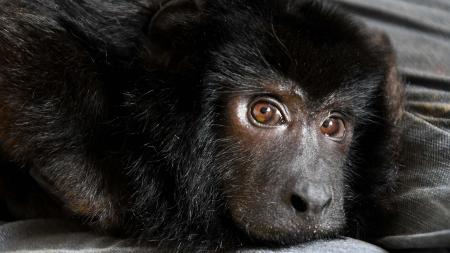Organizations dedicated to the conservation of nature assured that one in eight animal and plant species are in danger and that this “threats human existence itself”since “they are in charge of mitigating environmental crises”, within the framework of the World Wildlife Day which is commemorated this Friday.
For this reason, the United Nations (UN) titled as this year’s motto “Alliances for the conservation of wildlife” to raise awareness about this problem.
“The flora, fauna and other elements of wildlife are central to maintaining the ecosystem services that ensure life on earth. These services have to do with the state of the water, carbon sequestration, climate regulation, the air purification, therefore, when humans begin to alter these ecosystems we unleash situations that are negative,” he explained to Télam Manuel Jaramillodirector of the Wildlife Foundation (FVS).
Thus, he remarked that “the loss of many species can generate conditions that threaten the very existence of human life on earth.”
In accordance with this, Sebastian Di Martinobiologist and conservation director of the Rewilding Argentina Foundation, stressed that “all animal and plant species have intrinsic value, that is, the right to continue living like us”, but also “natural environments are our main allies to mitigate the main environmental crises that we are suffering, such as climate change, the loss of biodiversity and even the proliferation of diseases”.
In this regard, he noted that “a degraded ecosystem is an ecosystem that doesn’t work well”.
According to the report “Global Living Planet 2022”, released by the World Wide Fund for Nature (WWF, for its acronym in English), the populations of birds, mammals, fish and other forms of life that are monitored by various scientific projects decreased by 69% between 1970 and 2018, and it is estimated that between 1 and 2.5% of species have already become extinct.
“The loss of many species can generate conditions that threaten the very existence of human life on earth.”Manuel Jaramillo
“In Argentina those that have suffered the most are large mammals and birdswhich are called ‘key species’, since they have an ecological role to restore entire ecosystems,” Di Martino explained.
The director of Rewilding exemplified that by extinguishing the scarlet macaw, “there is no one to eat the fruits and disperse their seeds, causing the forest to lose its regeneration capacity.”
Another example is that of the jaguar that has become extinct in 95% of its original distribution area.
“When large predators are not present, there are other species that begin to proliferate, because their regulatory function as herbivores is not there. These increase in number which affects the vegetationwhich cause photosynthesis to capture carbon from the atmosphere, mitigating the greenhouse effect of climate change,” he explained.
In addition, “the predator eliminates the weakest or sickest individuals that are the easiest to hunt, and when they are missing the disease prevalence rate is higher.”
Some endangered species in our country are the jaguar, the huemul, the red macaw, the pampas deer, the Franciscana dolphin, the giant anteater, the escalandrún shark, the chimilero peccary and the dune lizard.
Among the main factors that endanger species are poaching, the degradation and destruction of their natural habitats, trafficking and illegal wildlife trade, the introduction of exotic species, pollution and the unsustainable use of a kind.
“What most conditions the loss of species is the damage to their habitat, which is why current regulations such as the Forest Law or a Wetlands Law must be implemented, which is essential to ensure those ‘migratory bird hotel’ spaces that need them. for food and rest,” said Jaramillo.
Another factor in which he emphasized the loss of biodiversity is petism, which “was decreasing since people have understood that pets are only domestic animals, but there is still traffic mainly of birds and reptiles, where they are captured mothers and the young are left without food or others die in transport, in addition animals that have had contact with humans for a long time cannot be reintroduced into their natural habitat.
“We must take advantage of the paradigm shift in social construction that exists with the link with fauna to correct the mistakes of the past and transform it into an opportunity to promote the return of wildlife to spaces from which they should not have disappeared,” he concluded. Jaramillo.
Regarding conservation policies, sources from the Ministry of the Environment and Sustainable Development of the Nation told Télam that work is being done on the creation of protected areas, such as national parks and nature reserves; in the control of invasive exotic species; the implementation of wildlife management plans, with the aim of protecting them and managing their population in a sustainable manner; and in the dissemination, education and awareness of the subject.
On the other hand, they mentioned that the animal welfare bill, which emerged from the public and federal debate, contemplates the protection and welfare of wildlife, and establishes specific measures to prevent exploitation, mistreatment and degradation of their habitats, with the aim of guaranteeing their conservation and well-being, as well as the conversion of zoos and aquariums.
March 3 was the date proclaimed by the UN in 2013 to celebrate World Wildlife Day as a commemoration of the anniversary of the approval in 1973 of the Convention on International Trade in Endangered Species of Wild Fauna and Flora (CITES, in its acronym in English).













